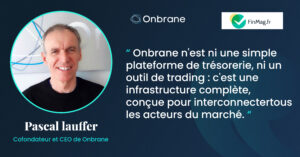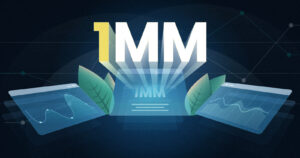What does sustainable finance really mean ?
Within the last decade, sustainable finance has leapt from ” niche ” to mainstream in the financial sector. But there is still no harmonized definition among market players today. Many stakeholders are trying to define what is “sustainable” and “green” but often they are specified in their own terms.
Here is the current market-used definition, based on ICMA works : “Sustainable finance incorporates climate, green and social finance while also adding wider considerations concerning the longer-term economic sustainability of the organisations that are being funded, as well as the role and stability of the overall financial system in which they operate.”
The European Commission also defines sustainable finance as “the process of taking due account of environmental, social and governance (ESG) considerations when making investment decisions in the financial sector”.
Sustainable finance offers tremendous opportunities to mobilise capital flows towards climate objectives and sustainable development goals (SDGs) that are established by the UN.
Sustainable investment products have skyrocketed
Therefore, sustainable finance is applicable to all debt products : bonds, medium-term notes (MTN), Commercial Paper (CP), asset-backed (ABS), etc. They have been transforming financial services and the way its participants conduct business. In fact, financial markets start to function differently, and green bonds are an important driver of this change.
Since their market launch in 2007, green bond issuance has reached more than US$1 trillion allocated to projects with a positive environmental impact. Multilateral Development Banks (MDBs), such as the EIB and the World Bank, have been the first to issue green bonds. From 2013, governments and corporates have been rapidly issuing green debt products.
Today, sustainable bonds are growing at an ever-increasing rate. New debt instruments have emerged, such as social debt and, lately, sustainability-linked debt products. The latter allows issuers to link financing costs to the success of sustainability targets defined by the issuer.
Climate related-risks are already financially material
In 2015, Mark Carney, a former governor of the Bank of England, warned the financial sector about climate-related risks that are underestimated by most. Since then, a rising number of financial actors have been taking into account the physical and transition risks related to climate change in their investment decisions.
All companies will constantly need funds for their activities and development. However, to finance a low carbon world, special attention must be paid to the way companies allocate their capital and how investors invest. Any finance professional (CFO, investment officer, treasurer, analyst…) must keep in mind that what is financed today is the world we will build for the future.
To reduce GHG emissions and stay below 2°C of warming, we must collectively achieve a carbon-neutral world by 2050. Last year, Larry Fin, the CEO of BlackRock stated in his annual letter that the climate crisis will reshape finance and our economies as we know it.
“Climate change is the great existential challenge of our times”
Christine Lagarde, President of the European Central Bank and former IMF Managing Director
Challenges remain in sustainable finance
Sustainable markets are still a drop in the ocean accounting for less than 1% of debt issuance in 2019.
The demand exceeds the supply of green assets.
There is a strong investor demand for responsible investments (US$100+ trillion) according to the PRI. In addition, the majority of green debt issuances are oversubscribed. This sends a strong signal – to issuers to finance sustainable projects and commit to sustainable goals. Thus, financial markets must speed up their investment flows.
A sustainable knowledge gap between market players
Market standards are moving at different paces around the world. European players are at the forefront of sustainable debt issuance and have access to advanced knowledge and information. But other regions and even many European players are struggling to seize sustainable opportunities and trends. Why ? There is a strong asymmetry of knowledge and a gap in the information flow between actors and regions.
Regulations and guidelines are in constant development
Sustainable market guidelines are voluntary. Regulations are moving in the right direction. Thus, global reporting harmonization is still to come, and EU standards are intending to standardize it. Meanwhile, there is a strong call for massive adoption of sustainable finance instruments by all players.
Reporting is costly and time consuming
All sustainable debt instruments require greater transparency and traceability on the impacts and allocation of funds in sustainable activities. Communication is often not consistent between actors and is not aligned with best market practices. This leads to additional costs for monitoring, auditing and reporting. But these are necessary to strengthen the issuer’s credibility.
Sustainable finance is key to tackle climate change
The benefits outstripe the costs when issuing sustainable debts. Interest rates are no longer linked solely to the borrower’s solvency. They also take into account their sustainable performance and their strategy to reduce carbon emissions. Some regular sustainable emitters are starting to experience lower financing costs compared to traditional financial products.
Other benefits include a better reputation for sustainability and greater attractiveness to all stakeholders such as investors. Therefore this makes it easier to obtain funds and keep a high liquidity balance. For investors, better information on climate risks and strategies will enable them to make better investment decisions, consistent with sustainable commitments.
On the back of the European Green Deal, sustainable finance is at the heart of Europe’s ambition to become the first carbon-neutral continent by 2050. In addition, a European green taxonomy has been established to clearly define which assets can be considered sustainable. Private investment and market regulation will play a crucial role in the transition to a climate neutral and resilient economy.
“Wherever finance goes, that is where emissions go or don’t go“
Christiana Figueres, a former executive secretary of the UNFCCC Secretariat.
Onbrane contributes to sustainable finance
We believe the future of financing must be sustainable. It is time to align investments with more than just profitability. It is time to build a better, fairer, more sustainable world. Onbrane is ready to help all debt market players in their transformation to adopt rapidly sustainable finance products and best practises.
Be the first sustainable debt negotiation platform
At Onbrane, we want to leverage our expertise and technologies to support all players in sustainable finance. Today, our debt OTC platform simplifies all sustainable debt issuance processes. Users can easily and efficiently create, upload and share their sustainable frameworks, projects and reports with their stakeholders. Our ambition is to always be up to date with regulatory and market changes in sustainable finance. Meeting client needs in the field of sustainable finance is a priority for us to make these markets more active and robust.
Communication and collaboration are essential to take actions
By design, Onbrane is a powerful communication tool that connects all users to an unlimited number of market players. They are able to share strategies, commitments and sustainable impacts, whether inside or outside the platform.
In addition, we enhance existing debt market collaboration by providing innovative features to interact, assist with due diligence, respect standards and engage with sustainable experts.
Conclusion: What can we expect in 2021 ?
2021 will be a crucial year for sustainable finance, particularly with sustainable recoveries launched in response to the COVID, with the endorsed European Green Deal and the upcoming COP26.
Challenges remain, starting with building consensus on a global framework for sustainable metrics and reporting as well as improving climate risk measurement and management.
The better, fairer and more sustainable world that we need to build is within our collective reach. Onbrane has been working for several years to simplify all debt processes and bring greater transparency and efficiency to the markets. We want to make our best contribution by offering high value-added sustainable finance solutions.






